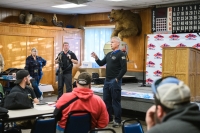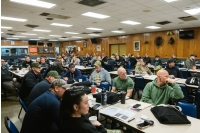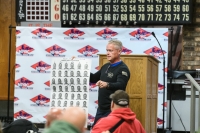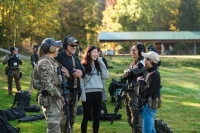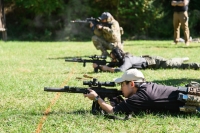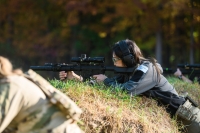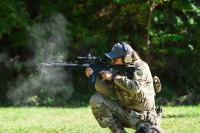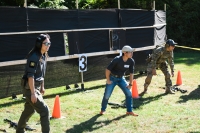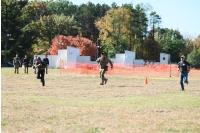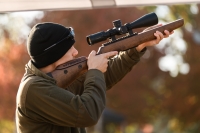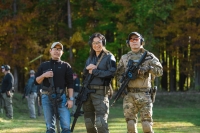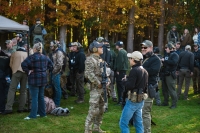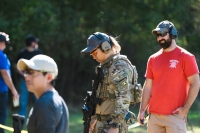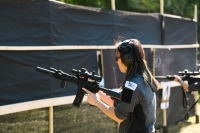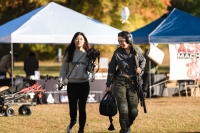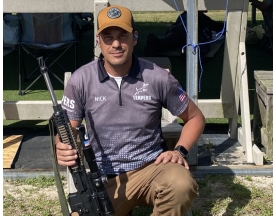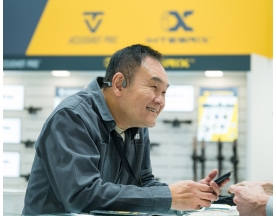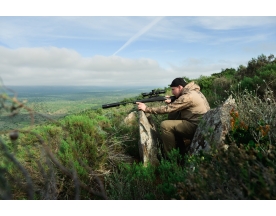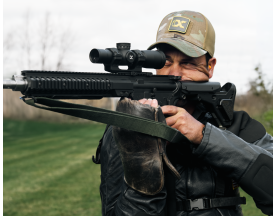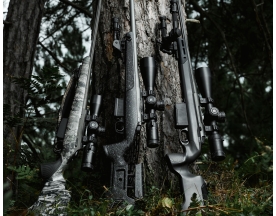We will use cookies to ensure that we give you the best experience on our website. If you accept, that means you agree to our use of Cookies and Privacy Policy. Learn more
Training Alongside Our LE at the 24th Annual NPRC
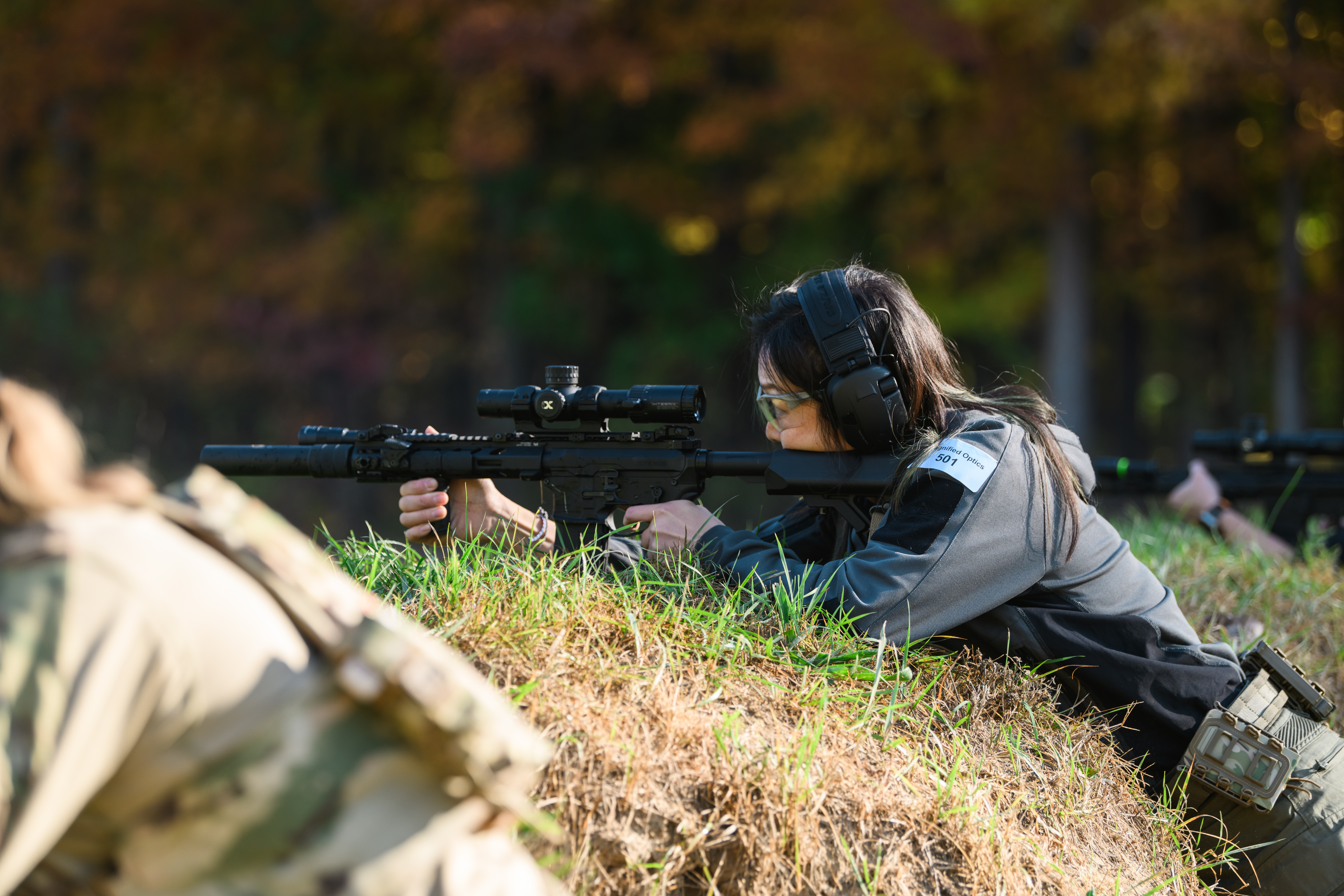
The 24th Annual National Patrol Rifle Championship
Our company has enjoyed a longstanding partnership with Center Mass on Plymouth Road for many years. Just a mile away from Leapers, Center Mass is a range, shop, and training team focused on educating citizens and law enforcement with a single objective: to help their clients save lives. Every year Center Mass partners with the Oakland County Sheriff's office to host the National Patrol Rifle Championships (NPRC), and while we have sponsored to show our support in the past, this was Leapers' first time shooting in the competition ourselves. Come shoot with your COPS, the NPRC flier says. Who could resist?
NPRC is now in its 24th year and is America's oldest ongoing patrol rifle and active assailant training event. This is just the second year that the competition was open to qualified citizens to compete alongside their law enforcement officers (LEO's).
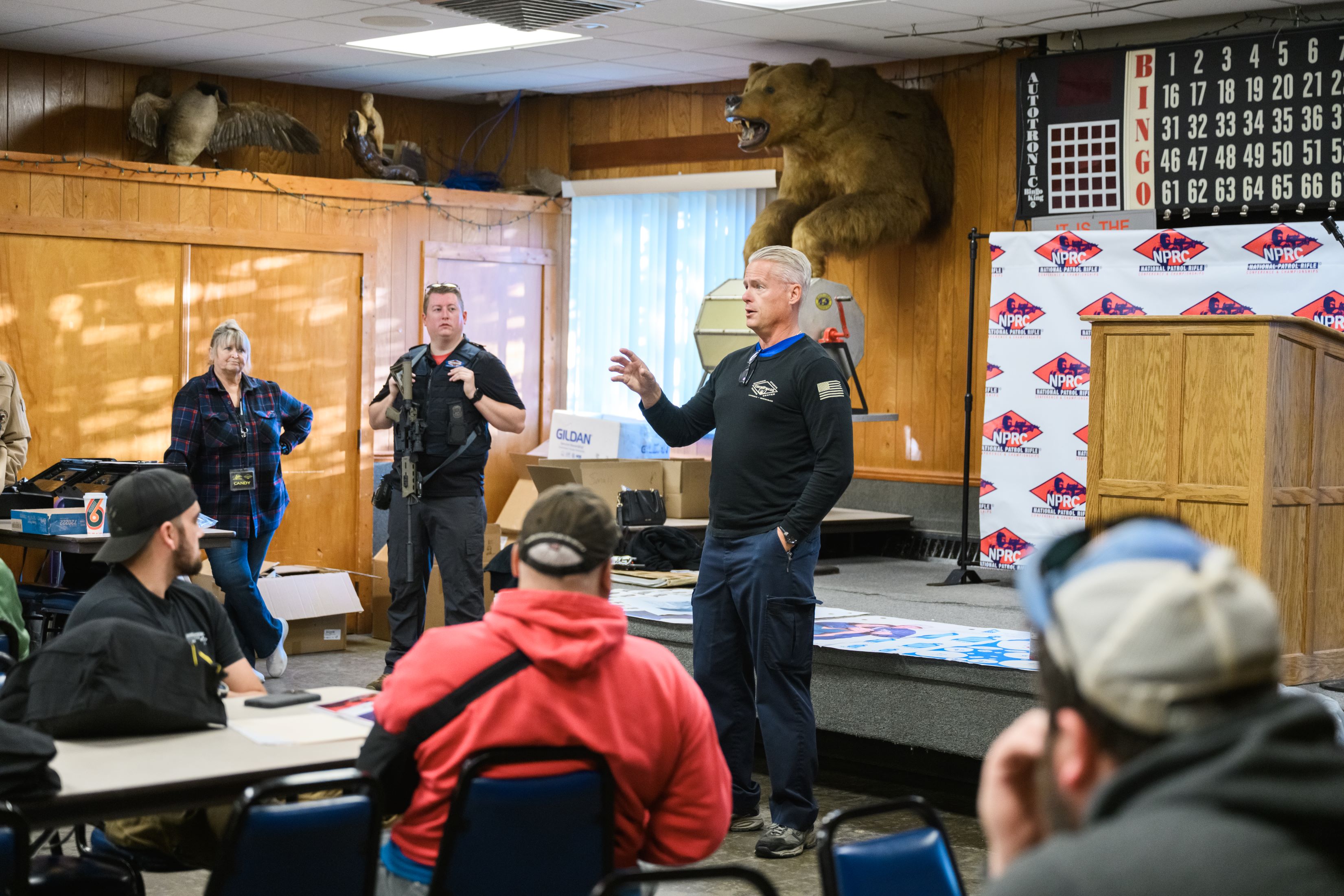


Jeff Felts, the chairman of the NPRC and owner of Center Mass, is passionate that all of us are stakeholders in our community's response to violence. The goal is to improve our readiness as a community as well as our relationships between counterparts - from fire and medical services to citizens, politicians, and business owners. There is no better way to share in that responsibility together than to join the ranks for a day of training and fun on the range.
This year's NPRC was held at the Multi-Lakes Conservation Club in Commerce Township, Michigan, on Saturday, October 19. Around 80 competitors rallied together, attracting law enforcement from Ohio as well as Michigan, from local, county, state, and federal agencies.
Leapers entered 3 on our shooting team: Kenny Huang, head of HR, Jay Yu, Engineering Manager, and Margaret Ding, our Marketing Director. We pooled our gear, borrowing a sling from Kiyo, mag pouches from Ken, and zeroed our rifles at our range the Friday before.
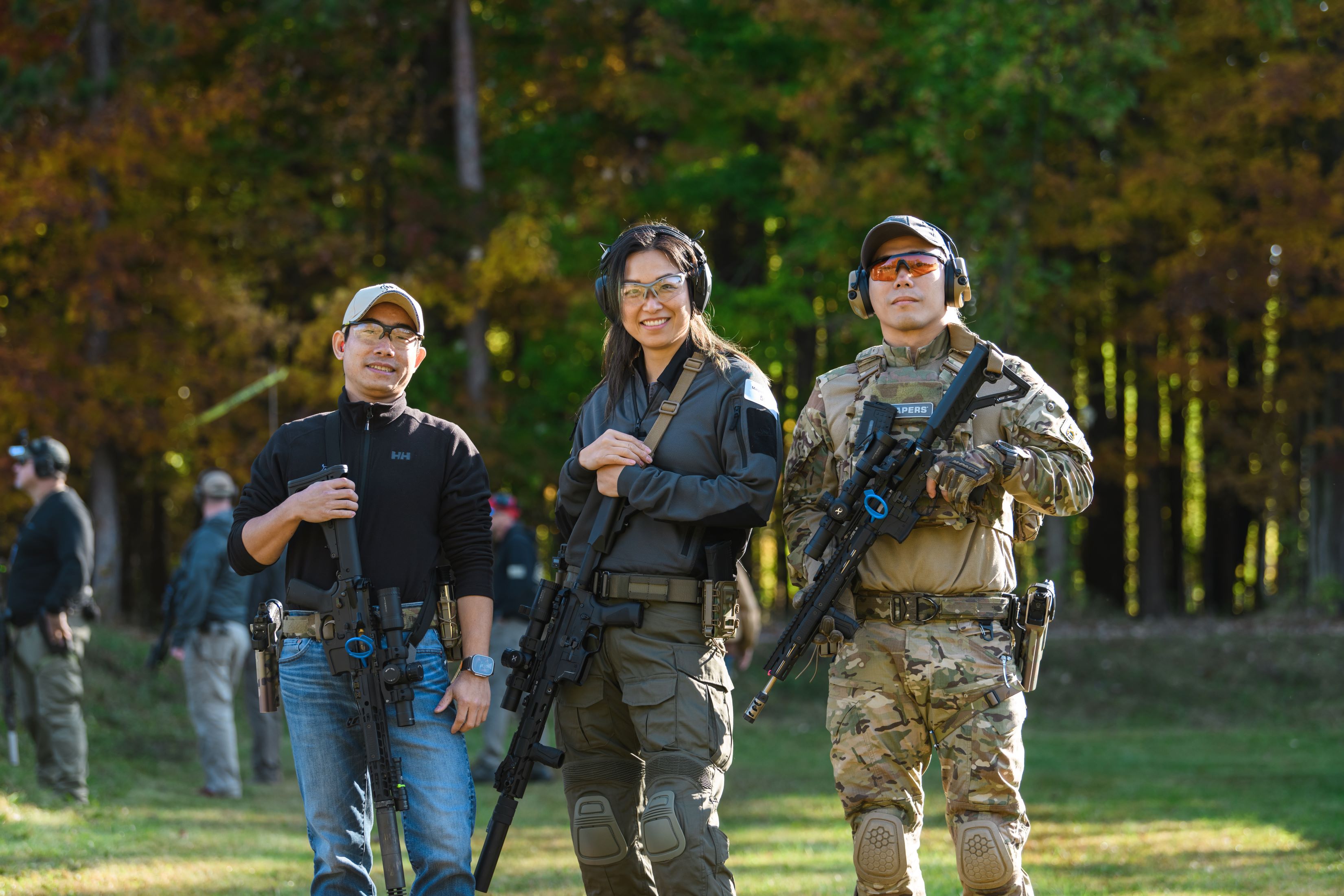


Course of Fire at NPRC 2024
Jeff Felts and the NPRC team designed 5 stages. Not only were they physically challenging, but also creative and inspired, taking real-life high pressure events and reimagining them as a training opportunity.
The Chip Shot & Know Your Limitations
To kick things off with a bang, every single competitor had to complete The Chip Shot. The Chip Shot was designed to reference former President Trump's assassination attempt, which many TV experts called a "chip shot," even for a novice with an AR at 130 yards. The team set out to prove that a "chip shot" isn't as easy as you think, when your heart is pounding and you're in a situation shooting under duress. Competitors had 15 seconds to complete 10 pushups or 10 air squats before running to a roof-sim prone position and having 1 round to make a headshot - which just happened to be a picture of Jeff in full yelling form.
After that, it was teaching us to Know Your Limitations. Competitors had a grid of different-sized targets, from 10" to 1" set up at 100 yards. You had 60 seconds to fire 10 rounds and choose whatever circles you thought you could hit. Just 1 miss out of 10 rounds would mean a zero on a One Miss, All Miss policy.
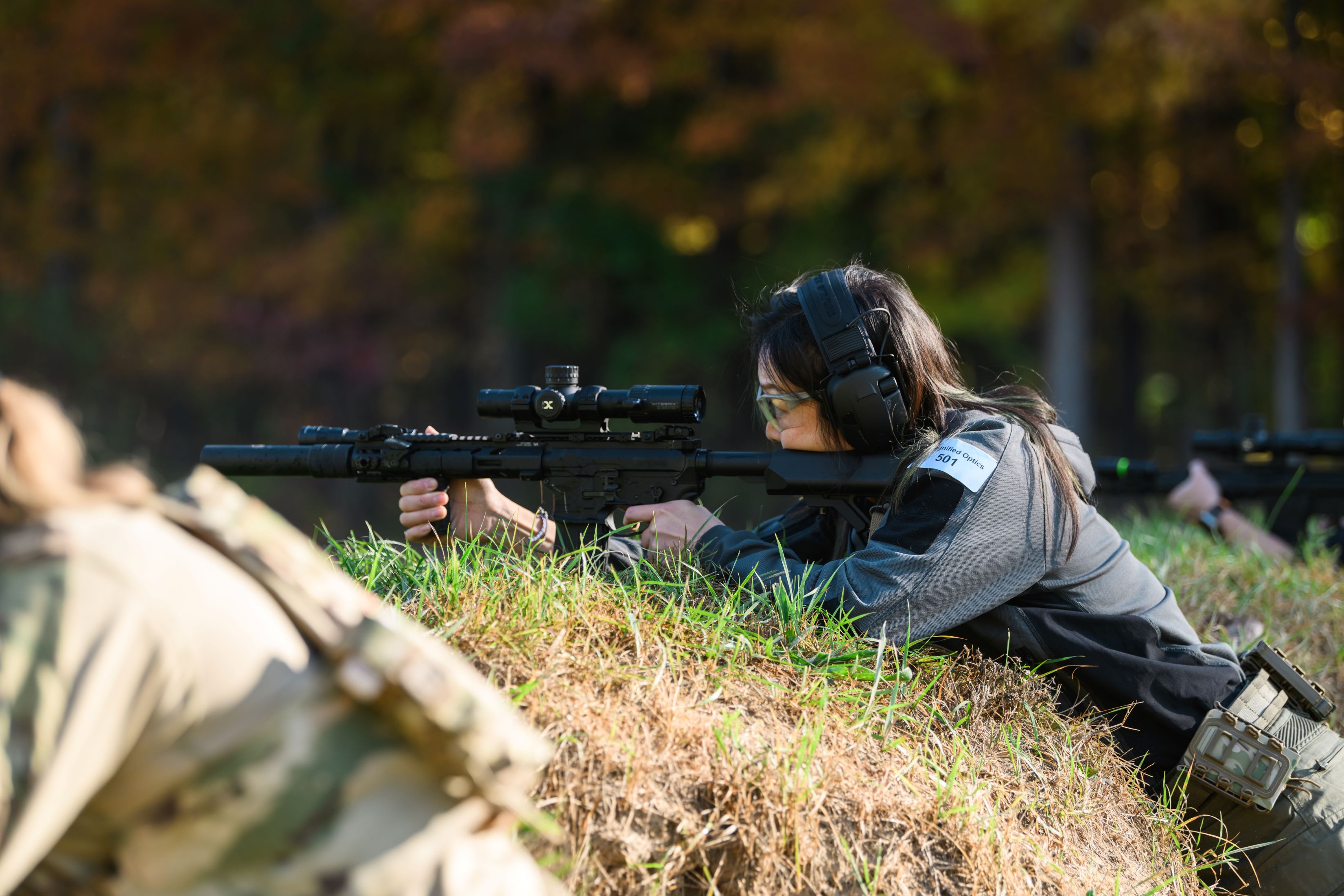


Support Side Shuffle
Kiyo, our resident NRA instructor on the Leapers Marketing team, always emphasizes the need to train with your support side and knowing your controls like the back of your hand, because you never know when you'll be stuck in an awkward position or rounding a corner from the opposite direction. That was the heart of this stage.
We were challenged to place accurate fire from all shooting positions while under stress. First, 10 pushups or air squats. Then, 4 prone targets, 3 kneeling targets, and 3 standing, simulating center mass at 100, 75, 50, 40, and 30 yards. Each of the 10 targets had to be shot once from your strong side, and once from your support side, switching between shoulders with safety on for all transitions. We had just 2 minutes to complete.
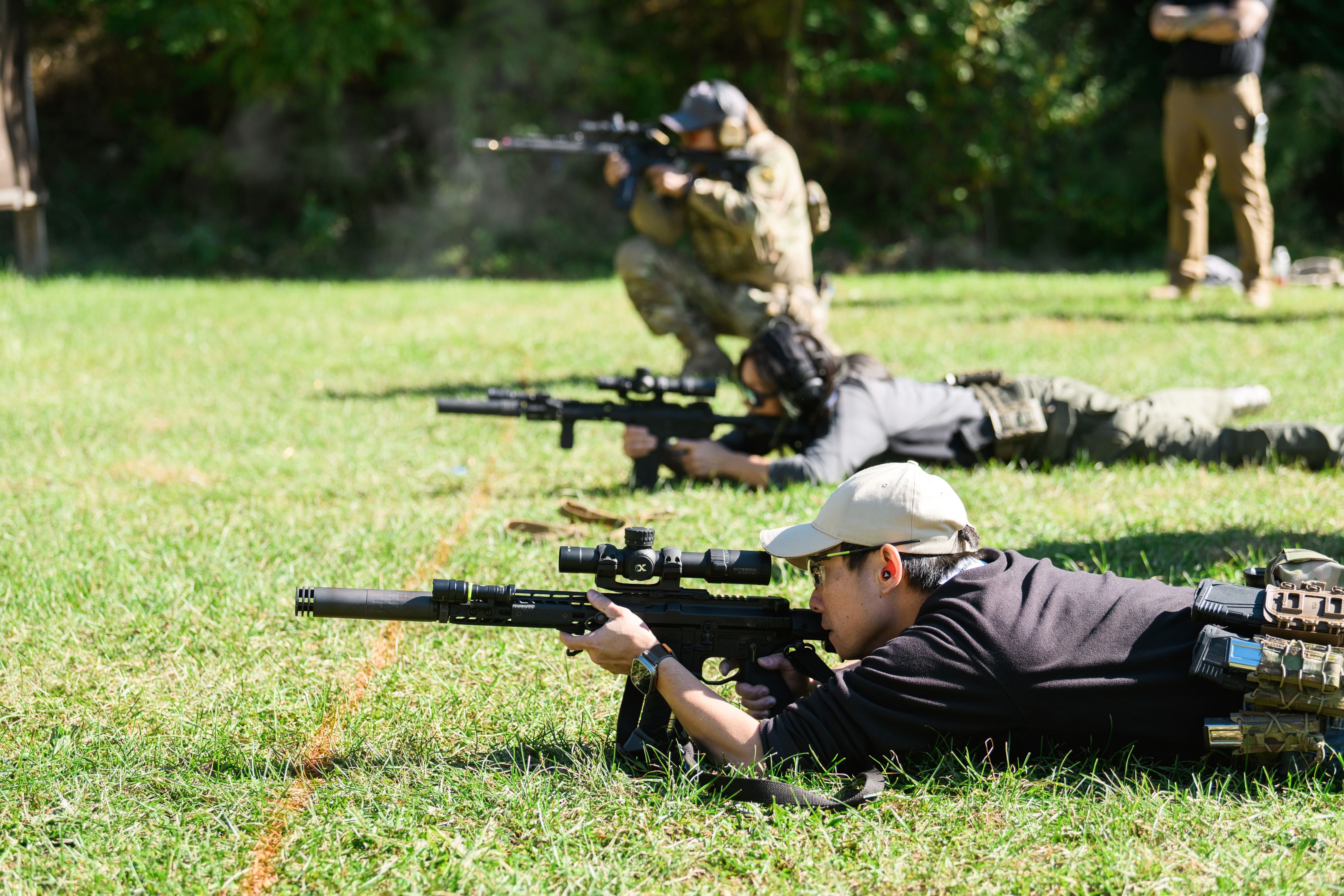


Holford & Reese Engagement
This course of fire recreated an officer-involved shooting (OIS) where a suspect had taken a family hostage in their own home. The real-life situation deteriorated and action was required to save the family. Responding LEO's could see the suspect through a ground level window but feared shooting through glass could endanger the hostages. Officer Reese quickly mobilized a plan to use the window as entry, while Lt. Holdford located the suspect and fired through the port to save the hostages' lives. When the incident was through they were this years' recipients of the Chudwin Award for Patrol Rifle Excellence.
For this stage we completed 10 pushups or squats before having 10 seconds left to locate, identify, and engage the moving male suspect with up to 5 rounds. The suspect was holding a hostage that was a no shoot zone.
Chopper Rescue
Chopper Rescue simulated an OIS where a police helicopter was under sporadic fire while flying over Detroit. The chopper pilot guided responding LEO's to dismount their scout car to the home a block away, and engage the moving suspect from behind a damaged wooden privacy fence less than 10 yards away.
We had 1 magazine with 5 rounds and 60 seconds to run 100 yards, pick up our rifles, charge them, and engage the target from standing position through simulated fence slats.
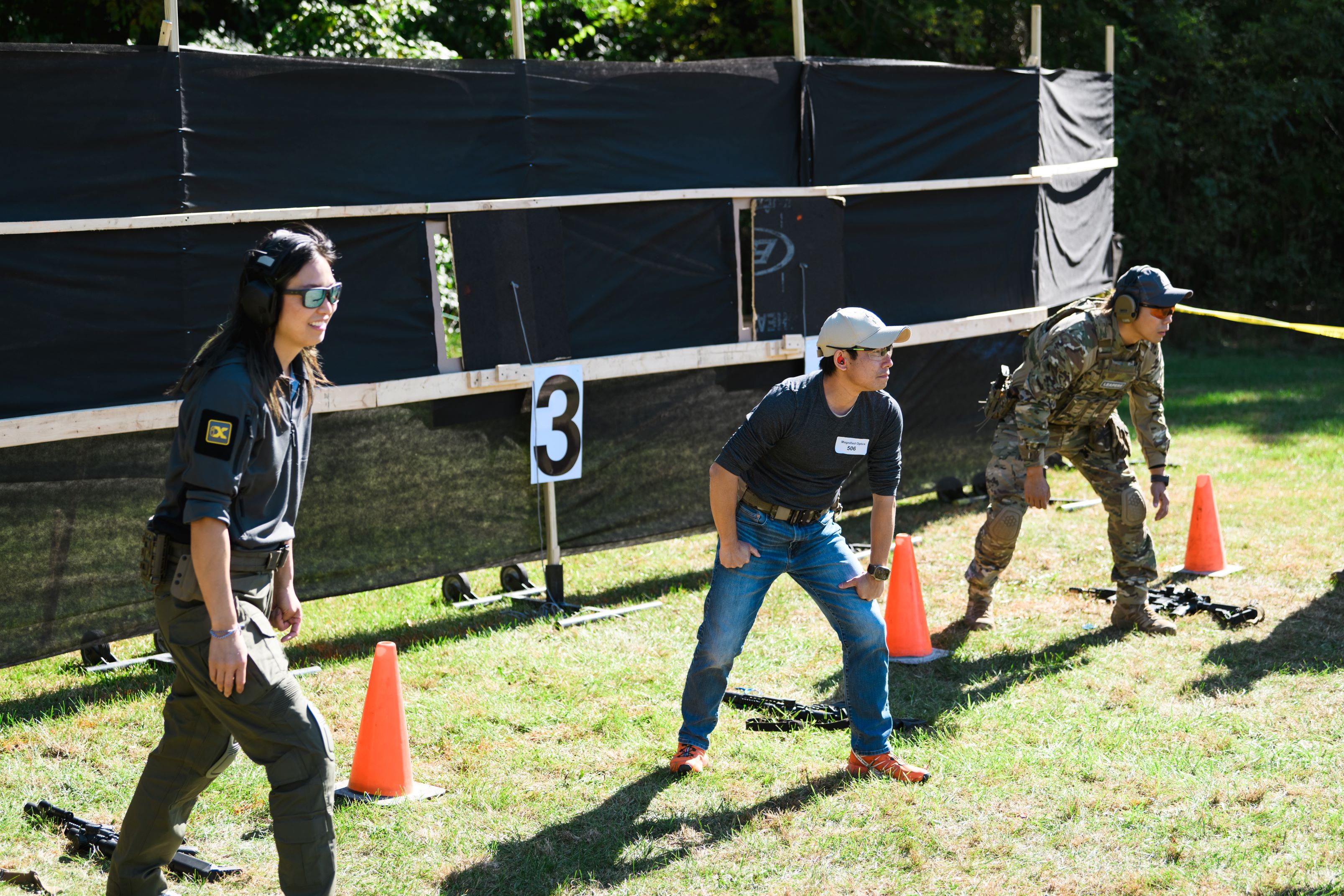


Hi-Low How Fast Can You Go
This course of fire tested the shooter's appetite for risk: what position will you shoot from, and at what speed, for accuracy within 2 minutes on a grid of very small targets. Each competitor had a grid of 48 tiny heads, and chose to shoot prone, sitting, kneeling, or standing, for increasing number of points for each shot made, depending on what position you chose.
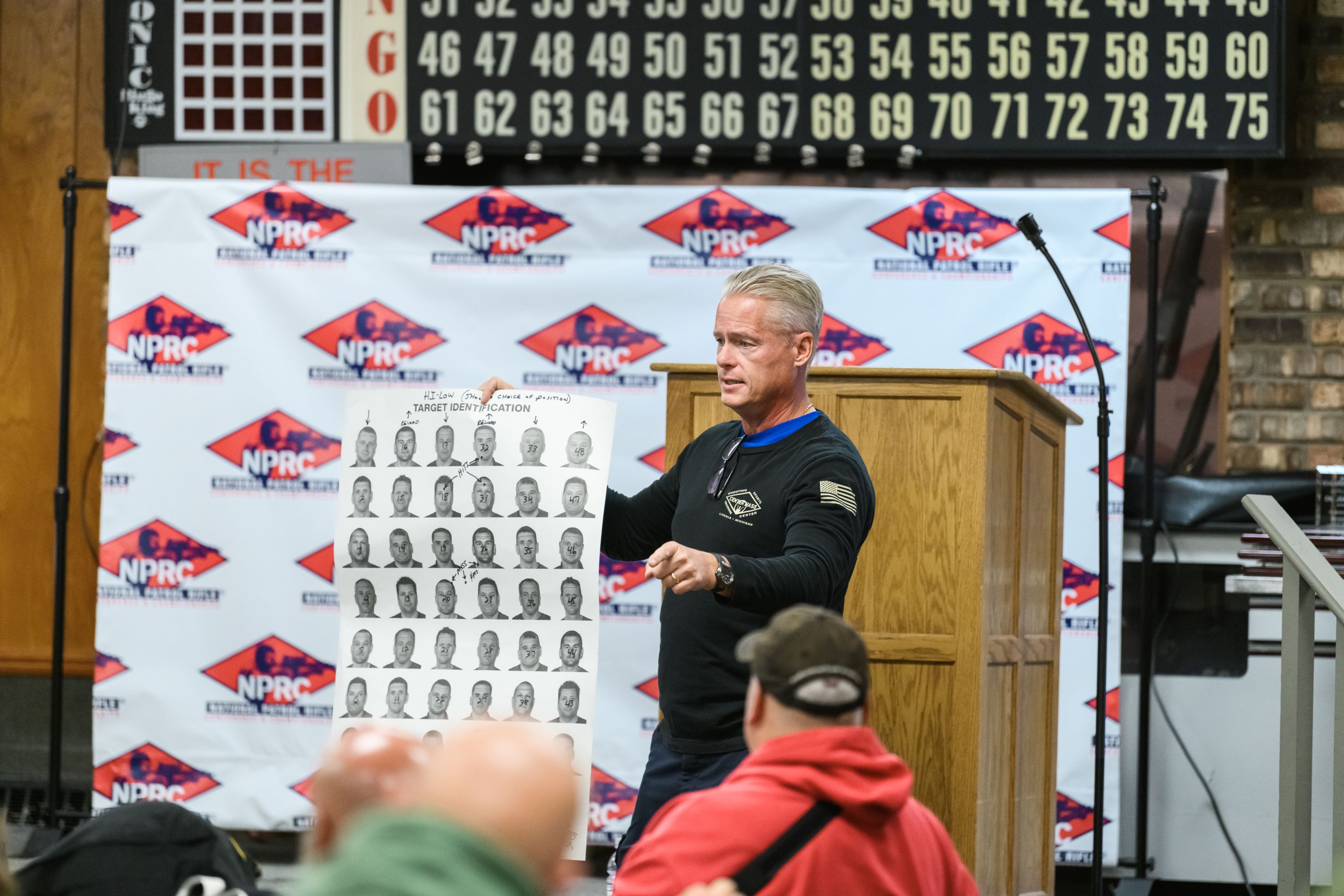


Our Results and What We Learned
Scores by LEO's ranged from 630 all the way up to the high score of 2,405 for the day. Kenny, Jay, and Margaret scored 1,165, 1,100, and 410 respectively. (Margaret is penning this article, and is choosing to be grateful for the learning experience rather than embarrassed to post my score on a public platform.) Check us out live in our Youtube video at the competition!
After the raffles were all said and done, with many worthy causes for which funds were raised, the point of the day really wasn't the score. The point of the day was the put ourselves in our LEO's shoes and train alongside them simulating life-threatening situations, taking joint accountability for our community's response to violence and crime. The experience was eye-opening.
Learning about Car Carry Condition alone was something to reflect on: LEO's have their rifle mag in, bolt forward, and safety on with no round chambered, largely because their pistol is their primary weapon and they may be getting in and out of vehicles. However in the event that they need to respond to an offender, the LEO is forced to chamber a round and turn safety off before they can use their rifle. As you can imagine, someone might forget to chamber a round, or short stroke it, leaving them in a dangerous predicament. We practiced Car Carry Condition to start most stages, and there are many who advocate for live weapons on safe to help our LEO's respond more quickly.
For any person who had the fleeting thought that Trump's assassination attempt was a "chip shot," let's first flip the scenario and imagine that we are defending against the situation. Even if you can hit a quarter at 100 yards at your local range with no problem 100% of the time, the situation changes when you're under duress. I went into the first stage thinking I had experience shooting High Power out to 600 yards and that completing a 110 yard shot was a piece of cake. Add in 10 squats, no sling, competitive pressure and a time crunch, and wham! Suddenly I was shooting Jay's headshot of Jeff instead of my own. Identifying your target and steadying your shooting position in seconds or split seconds with an elevated heart rate is a completely different story, that will take me repetition to learn. I proved my point by shooting my fellow competitors target a second time in the Chopper Rescue... but at least he got a perfect score.
Support Side Shuffle was another challenge. Not all of us regularly train our support side, or have our own carefully optimized AR build to place our finger on the right control without thinking twice. Switching between your dominant and weak eyes is awkward when you're not used to it, and costs you precious seconds swimming in your eye box with a different length of pull, trying to find your picture. But it's a realistic situation. Sometimes you don't always have a right corner to round as a left-handed shooter. You might need to contortion yourself based on the cover you can find in the field, or you might even be injured on your strong side. Almost none of the competitors, civilian or LEO, finished this round standing, which meant there was time to shave off in transitions, making shooting from our support side just as natural as shooting from our strong. Of our squad of 3, Jay made it through the most targets.
When checking our risk tolerance during the Hi-Low stage shooting 48 heads lined up in rows, Kenny and I chose to shoot prone with 5 pt hits, Jay shot kneeling for 15 pt hits, and a majority of LE we saw shot standing for 20 pt hits. This was a gamified scenario, but the trade off on shooting position was accuracy: could you make more hits for less, or less hits for more, and come out on top? Within our squad, I took the lead with 145 pts from 29 prone hits while Jay and Kenny were closer to 10.
While Knowing Your Limitations might seem more like an arcade game than a life-threatening scenario, the point it makes is clear. We had 10 rounds to make, and the choice of targeting circles from 1" up to 10" at 110 yards. Any miss meant an overall zero for your scorecard. I got cocky, thinking again about the long distance shooting we did, targeting 4" and 2" circles, while Kenny and Jay targeted the 10" circle as their primary. While I knew I probably missed, I certainly didn't expect the 10" grouping I ended with, forcing me to remember I wasn't shooting with a precision rifle, but a 10.5" SBR, and the physical demand of competition had elevated my heartbeat more than my regular relaxed form. Kenny had just 1 miss out of 10, zeroing out his scorecard, and we heard many LEO's who had the same.
See You Next Year
As we often say but is hard to enact, training and knowing your equipment trumps all else. It means nothing to have the most expensive performant optic if you can't pick up your rifle and react to whatever a situation throws at you. If you truly are forced to respond, it won't be under perfect conditions, and every second will count. The person who readies their rifle, positively identifies their target, and engages accurately first is the one who will come out on top. Real life has no redo's and training is where we can prepare ourselves and our community to be ready to protect and defend.
Shooting in the NPRC gave us a firsthand glimpse into what readiness means. We are taking home a training plan, but also inspiration and ideas for our product roadmap here at Leapers and UTG PRO. How can we make transitions smoother and easier with our designs? How can we shave off that extra millisecond if we expect our LE to rely on our product? How do we expect this to perform under pressure?
Our team was nervous, excited, and honored to shoot in the NPRC alongside our first responders, and we plan to come back with even more practice and participants for 2025. Keep an eye out for Kenny on the range and don't let him talk too much smack. Thank you to NPRC and Center Mass for the chance to sponsor such an important event, and see you next year!


